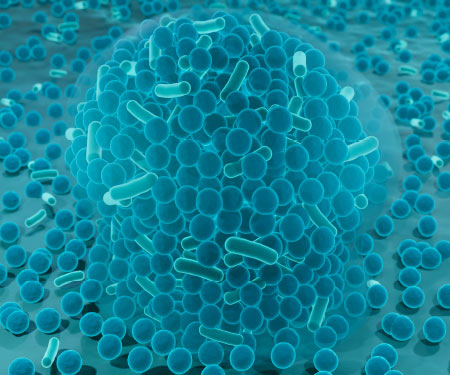Decipher the mechanism of action triggered by your prophylactic solutions
In the context of vaccine development, the characterization of the mechanism of action of your vaccine candidate is a key asset when submitting to the regulatory agencies. Vaccine-induced immune response is complex and requires precise tools to understand what type immune cells are triggered and how cells phenotypically and functionally differentiate.
When testing novel vaccine formulations (protein-based, mRNA…), we have the ability to position them among already existing and well-characterized, commercial formulations (proven successful and safe).
Decipher the mechanism of action of vaccines & adjuvants
To decipher the MoA of your vaccine candidate we have the ability to investigate the host response locally (at the site of injection/administration) and at the systemic level relying on omic and immunological analysis. We can assist you in performing the biological interpretations and advise you on the best technologies to use to answer your biological questions or characterize your product according to your specific needs and budget.
For the local response, we will choose amongst the following technologies:
- MS imaging technology to detect specific metabolites/proteins and monitor the activity of innate immune cells depending on the vaccine studied,
- flow cytometry to longitudinally identify the various immune cell types recruited to the site of injection/administration,
- animal imaging strategies to track vaccine antigens into the tissues.
For the systemic response, we design tailor-made projects relying on some of following technologies:
- metabolomic, proteomic and transcriptomic,
- flow cytometry,
- ELISA, ELISPOT, neutralization assay,
- microfluidic-based single-cell solution (DROPCELL technology) to investigate longitudinal single-cell immune function (e.g. monitoring of TNF-α production by encapsulated monocytes),
- antibody glycosylation (end 2022) to better characterize antibody functionality,
- mid-throughput analysis of specific antibody avidity (Bio-layer Interferometry – BLI).
Identify molecular signatures of protective immunity triggered by your vaccine
We generate high quality omic data to support your vaccine development. We have implemented several analysis pipelines (mono or multi-omic) to uncover immunogenicity and reactogenicity signatures in various species. These signatures can help you rationalize your vaccine development or improve your vaccine formulations prior to phase I trial. In addition, we have an expertise in signature reduction and implementation into appropriate companion diagnostic tools.
To tackle this challenge we:
- design smart experimental schemes to characterize vaccine outcomes (local and systemic inflammation as well as immunogenicity measurements),
- perform data integration (omics/clinical),
- use benchmarked multiomic analysis approaches,
- perform signature reduction required for new diagnostic assays.
Evaluation of prophylactic/therapeutic vaccines immunogenicity
We characterize both your vaccine-induced early immune response and antigen-specific memory response in various tissues using the following solutions:
- ELISA; ELISPOT; neutralization assays; multi-dimensional flow cytometry; cytokine detection,
- DROPCELL technology to investigate longitudinal single-cell immune function,
- OMIC technologies,
- provide support for bioinformatics, biostatistics and biological data interpretation.
Identify molecular signatures of protective immunity triggered by your vaccine
We generate high quality omic data to support your vaccine development. We have implemented several analysis pipelines (mono or multi-omic) to uncover immunogenicity and reactogenicity signatures in various species. These signatures can help you rationalize your vaccine development or improve your vaccine formulations prior to phase I trial. In addition, we have an expertise in signature reduction and implementation into appropriate companion diagnostic tools.
To tackle this challenge we:
- design smart experimental schemes to characterize vaccine outcomes (local and systemic inflammation as well as immunogenicity measurements),
- perform data integration (omics/clinical),
- use benchmarked multiomic analysis approaches,
- perform signature reduction required for new diagnostic assays.
Microbiome/vaccine interaction
The growing evidence of interplay between microbiota and the immune system open new perspectives on the role of microbiota modulation to potentiate vaccine efficacy according to patient types. To optimize the outcome of your vaccine, we evaluate the impact of the microbiota on its immunogenicity and efficacy by:
- implementing our gnotobiotic mouse model composed of 15 well-defined strains. This pre-clinical model can be used to investigate how prebiotic and probiotic can modulate the immune responses prior to a vaccine treatment. In addition, we master the integrated tools to perform mechanistic studies in such model.
- use (or co-develop) in vitro models to study the role of the gut microbiota on the nature of vaccine response induction.


